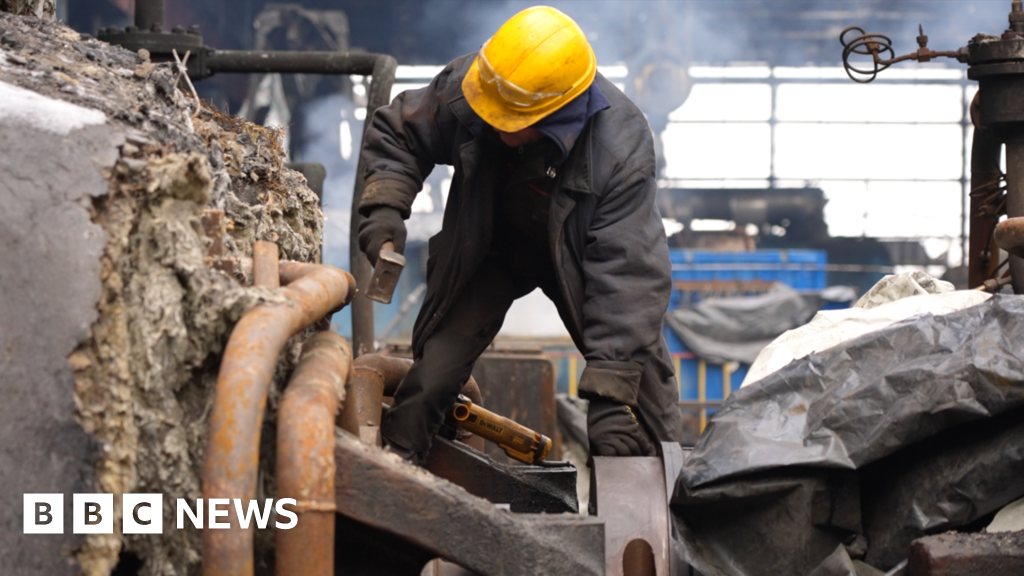In the control room, shielded from the turbine hall by a wall of sandbags, Dmytro is taking a break.
“Some are defending the frontlines on the battlefield,” he tells us. “We have our own energy front to defend.”
But while the engineers from DTEK wrestle with the well-nigh impossible task of keeping one step ahead of Russia’s relentless assault, the rest of the country is doing what it’s been doing since the war began: adapting.
With the full-scale invasion’s third winter arriving, city streets are once again buzzing and roaring to the sound of generators small and large. The street lamps may be off, but shops and restaurants are brightly lit.
Diesel fumes hang heavy in the chill winter air.
In tower blocks, where power cuts put lifts out of action and prevent hot water from reaching the upper floors, residents already used to keeping power banks and flashlights to hand are starting to innovate.
Some have invested in batteries and inverters for their homes, which kick in as soon as the power goes off.
In a twenty-five storey block in Kyiv’s Pozniaky neighbourhood, home to around 700 people, residents have clubbed together to install a larger system in the basement, powerful enough to keep a single lift operating and pump hot water to the upper floors.
For Nataliya Andriyko, who lives on the 19th floor with her husband and pets, it’s a blessing.
“It’s a bizarre feeling,” she tells me as we sit in a kitchen lit by a single battery-operated lamp.
“It’s scary how happy I am just to have these basic needs. That I can take the dog downstairs in the lift rather than on foot in the dark. That I have water in the tap.”

